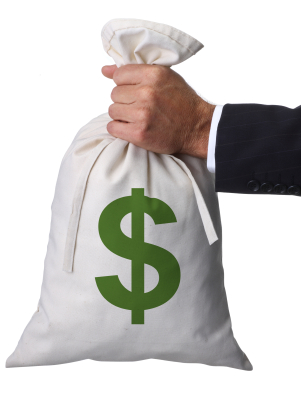Submitted by Lisa Graves on
 I am very pleased to announce that Mary Bottari is joining the Center for Media and Democracy. She is the Director of a new project we are calling the "Real Economy Project." (You know, the "real" economy, as opposed to the faux Wall Street-driven economy?)
I am very pleased to announce that Mary Bottari is joining the Center for Media and Democracy. She is the Director of a new project we are calling the "Real Economy Project." (You know, the "real" economy, as opposed to the faux Wall Street-driven economy?)
For those of you who don’t know Mary, she really is a powerhouse — she’s an exceptional public interest advocate with tremendous communications and campaigning experience. For the last ten years, she has served as a senior analyst for the Washington, D.C.,-based consumer group Public Citizen.
She started in its Global Trade Watch division in the months before the World Trade Organization’s Seattle Ministerial meeting. Mary was deeply involved in planning for Seattle, and she ran the NGO press center to help communicate the disillusionment of labor, farm, and environmental groups with the corporate trade agenda.
Before joining Public Citizen, she worked for U.S. Senator Russ Feingold and assisted with the effort to pass the McCain-Feingold campaign finance reform bill. You can read more about her bio here.
For CMD, Mary will be tracking the bank bailout and other aspects of the continuing economic crisis, including the jobless recovery. As you know, the financial crisis has been characterized by emergency interventions and complex policy discussions that are completely opaque to average Americans. (As one commenter put it, "TARP, TALF? Let’s call the whole thing off!")
 Due to the complexity of the issues and the lack of clear avenues for input, individual taxpayers have had no meaningful role in shaping the policies being proposed by industry and government. This leaves the "banksters" in the driver’s seat. The goal of the Real Economy Project is to pierce through the spin on these issues and break down dense material about the economy so ordinary people can understand what’s really going on. It will also facilitate your input into these issues in ways that prioritize the interests of Main Street over those of Wall Street.
Due to the complexity of the issues and the lack of clear avenues for input, individual taxpayers have had no meaningful role in shaping the policies being proposed by industry and government. This leaves the "banksters" in the driver’s seat. The goal of the Real Economy Project is to pierce through the spin on these issues and break down dense material about the economy so ordinary people can understand what’s really going on. It will also facilitate your input into these issues in ways that prioritize the interests of Main Street over those of Wall Street.
With the fun and interactive “Banksters” website, which will be launched next month, we’ll be providing a go-to place where you can find news and progressive policy solutions to the crisis. Banksters will also provide access to the best information about vital campaigns you can participate in on these issues that affect your wallet and our future.
This great new project will build a special wiki in CMD's SourceWatch to serve as a resource for articles that tell the real story about companies like Citigroup, Goldman, and AIG, and central figures like Tim Geithner, Larry Summers, Ben Bernanke, and more. With the coming fight over reversing the ill-conceived de-regulation of the financial services industry, which is on the congressional docket this autumn, this project is coming at a key moment in this critically important policy debate. And, corporate front groups and spinmeisters are already hard at work trying to convince Congress and the American people that the crisis is over and the need for reform has passed.
So, I’m very excited that CMD is expanding its important work debunking corporate spin while playing a vital role in the health care reform debates with Wendell Potter (our one-man media juggernaut) and on financial services reform — two of the most pressing issues of our time. I would also like to extend a big thanks to CMD’s founder, John Stauber, for persuading Mary to join the Center. Please check out her most recent blog, and join me in welcoming Mary to our team!
Lisa Graves is the Executive Director of the Center for Media and Democracy based in Madison, Wisconsin.


Comments
Ariel replied on Permalink
QUESTION for Mary and the Real Economy Project
Dave Leland replied on Permalink
Ariel's Question for Mary and the Real Economy Project
Dave Lorenzo replied on Permalink
I'm a little confused with
MB replied on Permalink
Phila's "emergency" loan from JP Morgan Chase
Ariel replied on Permalink
Municipal Borrowing Directly from Corporate Banks
Ariel replied on Permalink
As to Municipal Borrowing Directly from Bailed Out Banks
Ariel replied on Permalink
Question